Optimization and Experiment of Mass Compensation Strategy for Built-In Mechanical On-Line Dynamic Balancing System
Abstract
1. Introduction
2. Optimization of Spindle Built-In Dynamic Balance Mass Compensation Strategy
2.1. Balance Principle
2.2. Optimization Model
3. Spindle Dynamic Balance Mass Compensation Optimization Simulation Experiment
3.1. Experiment Platform
3.2. Simulation Experiment
4. Optimization Comparison Verification
5. Conclusions
Author Contributions
Funding
Conflicts of Interest
References
- Fan, H.W.; Jing, M.Q.; Liu, H. Review for studying on active hybrid auto-balancer of grinding wheel and motor spindle. Vib. Shock 2012, 31, 26–30. [Google Scholar]
- Wang, Z.; Tu, W.; Zhu, F.L. High Speed Machine Spindle On-line Dynamic Balancing Experimental Study Based on Influence Coefficie. Mach. Tool Hydraul. 2018, 46, 28–32. [Google Scholar]
- Li, H.W.; Xu, Y.; Gu, H.D.; Zhao, L.; Yu, S.Y. Field Dynamic Balancing Method in AMB—FIexible Rotor System. China Mech. Eng. 2008, 19, 1419–1422. [Google Scholar]
- Gu, C.H.; Zeng, S.; Luo, D.W.; Zhang, J.Q. Design and tests for a mechanical type of online balancing actuator. Vib. Shock 2014, 33, 151–155. [Google Scholar]
- Chen, L.F.; Wu, H.Q.; Wang, W.M. A study of an error-free movement control algorithm for a bi-disc balancer. J. Beijing Univ. Chem. Technol. (Nat. Sci. Ed.) 2012, 39, 89–94. [Google Scholar]
- Cao, Q.; Chen, L.F.; Gao, J.J. Study of bi-disc electromagnetic balancer movement control for rotor auto-balancing. J. Beijing Univ. Chem. Technol. (Nat. Sci. Ed.) 2010, 3, 121–125. [Google Scholar]
- Li, X.F.; Zheng, L.X.; Liu, Z.X. Theoretical and Experimental Research on Balancing of Flexible Rotors without Trial Weights. Vib. Test Diagn. 2013, 33, 65–570. [Google Scholar]
- Jiang, H.; Shi, Y.F.; Ran, X.F. A new rotor balancing method based on PTFA theory. Acta Technica CSAV 2017, 62, 97–107. [Google Scholar]
- Larios, J.G.M.; Ocampo, J.C.; Ortega, A.B.; Pliego, A.A.; Wing, E.S.G. Balanceo Automático de un Sistema Rotor-Cojinete: Identificador Algebraico en Línea del Desbalance Para un Sistema Rotodinámico. Rev. Iberoam. Automática Inf. Ind. 2016, 13, 281–292. [Google Scholar] [CrossRef]
- Kuen-Tai, T. Application of the Genetic Algorithm Method in Flexible Rotor Dynamic Balancing. Mon. J. Taipower’s Eng. 2015, 802, 18–30. [Google Scholar]
- Xu, X.B.; Chen, S. Field Balancing and Harmonic Vibration Suppression in Rigid AMB-Rotor Systems with Rotor Imbalances and Sensor Runout. Sensors 2015, 15, 21876–21897. [Google Scholar] [CrossRef] [PubMed]
- Xu, J.; Zhao, Y.; Jia, Z.Y.; Zhang, J.J. Rotor dynamic balancing control method based on fuzzy auto-tuning single neuron PID. IEICE Electron. Express 2017, 14. [Google Scholar] [CrossRef]
- Xu, B.; Zhang, L.N.; Zheng, P.; Xue, J.W. The New Control Strategy of Grinding Wheel Dynamic Balance Measurement and Control System. Mach. Des. Manuf. 2018, 1, 137–139. [Google Scholar]
- Fan, H.W.; Wu, T.Q.; Liu, H.; Jing, M.Q. Steady-state temperature field FEA of machine tool motorized spindle considering electromagnetic. Manuf. Technol. Mach. Tool 2017, 11, 88–91. [Google Scholar]
- Ma, H.T.; Ma, S.F.; Liu, X.Y.; Yu, Y. A dynamic balance optimal fuzzy controller for weight grinding wheel. J. Changchun Univ. 2015, 36, 163–166. [Google Scholar]
- Zhang, S.H.; Zhang, Z.M. Design of an active dynamic balancing head for rotor and its balancing error analysis. J. Adv. Mech. Des. 2015, 9, JAMDSM0001. [Google Scholar]
- Wang, X.X.; Zeng, S. The study of an on-line automatic dynamic balancing system and its dynamic balancing method when used on a flexible rotor. Reneng Dongli Gongcheng/J. Eng. Therm. Energy Power 2003, 18, 53–57. [Google Scholar]
- Wang, Z.W.; He, L.D.; Su, Y.R. Application of hydraulic automatic balancing technology on a fan rotor. Proc. CSEE 2009, 29, 86–90. [Google Scholar]

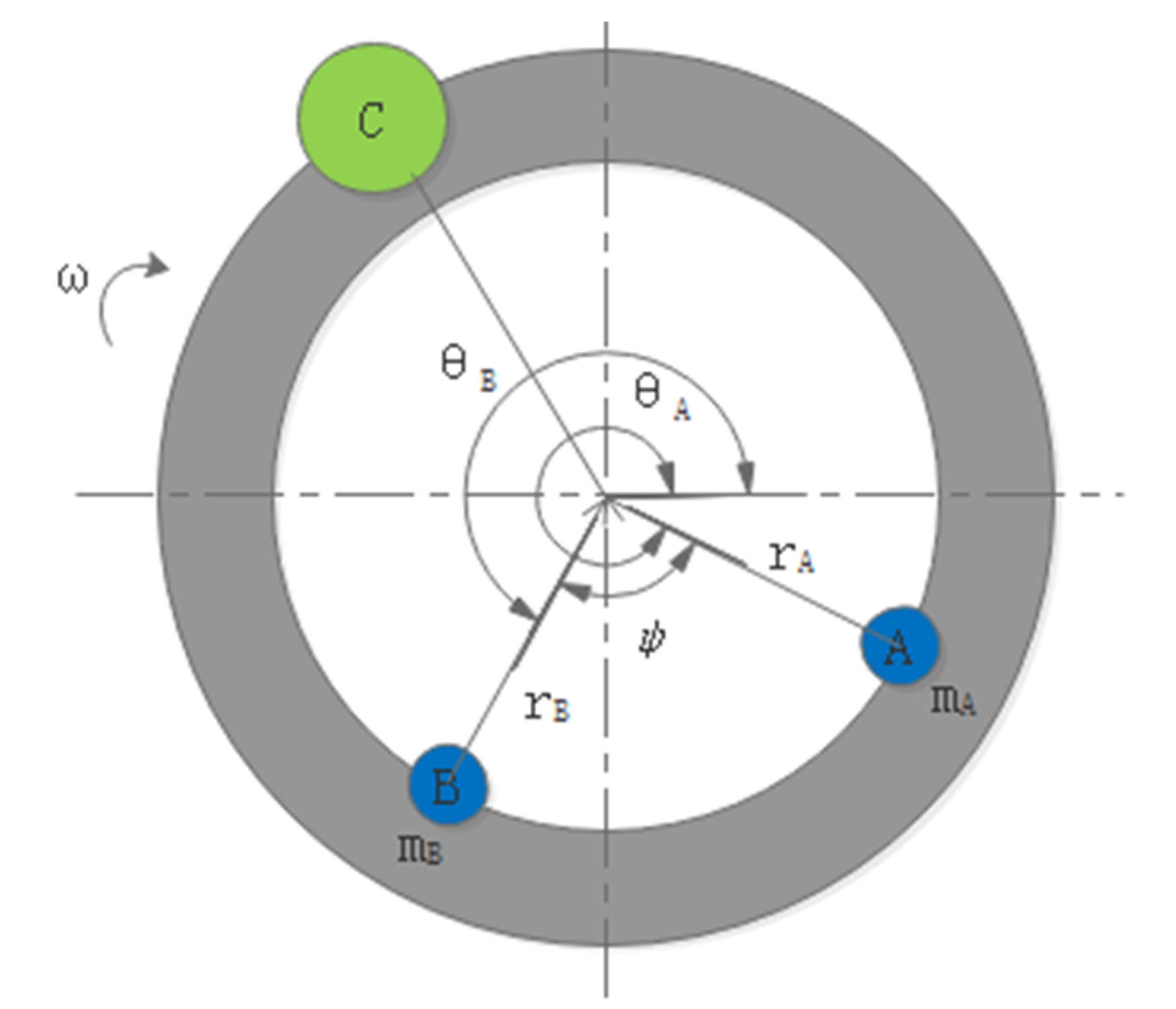
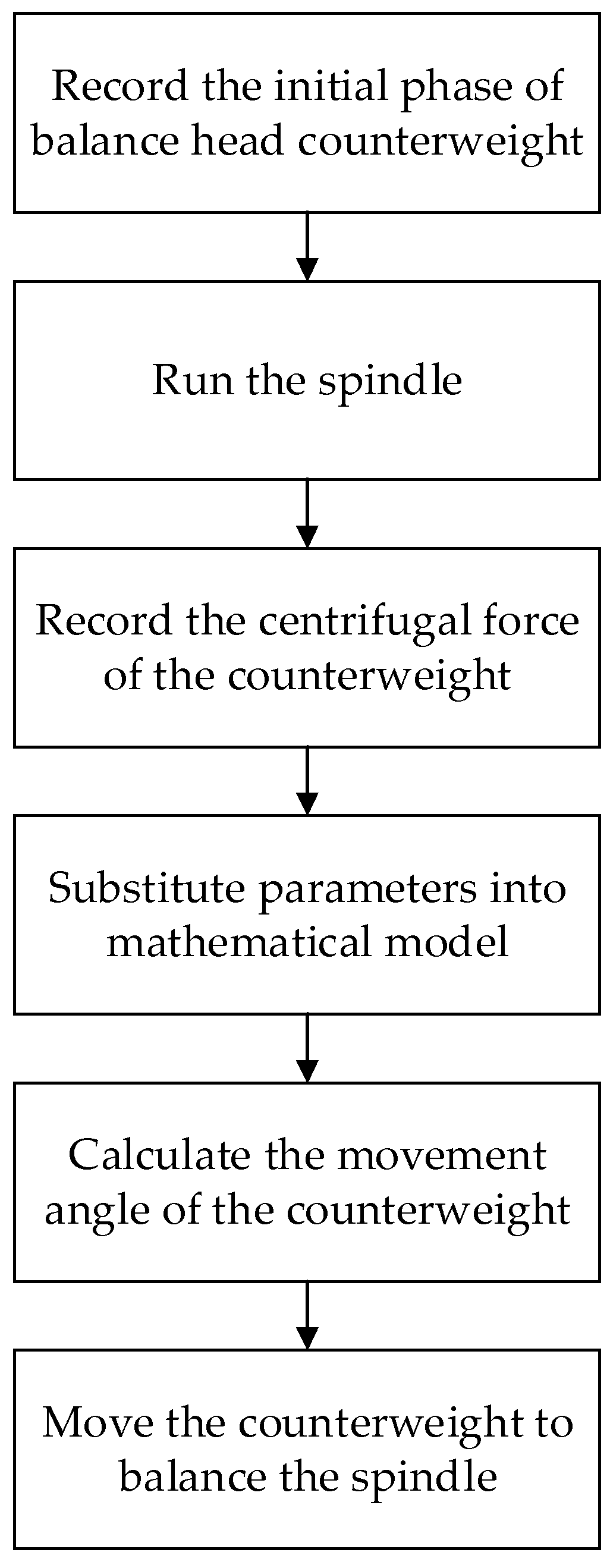
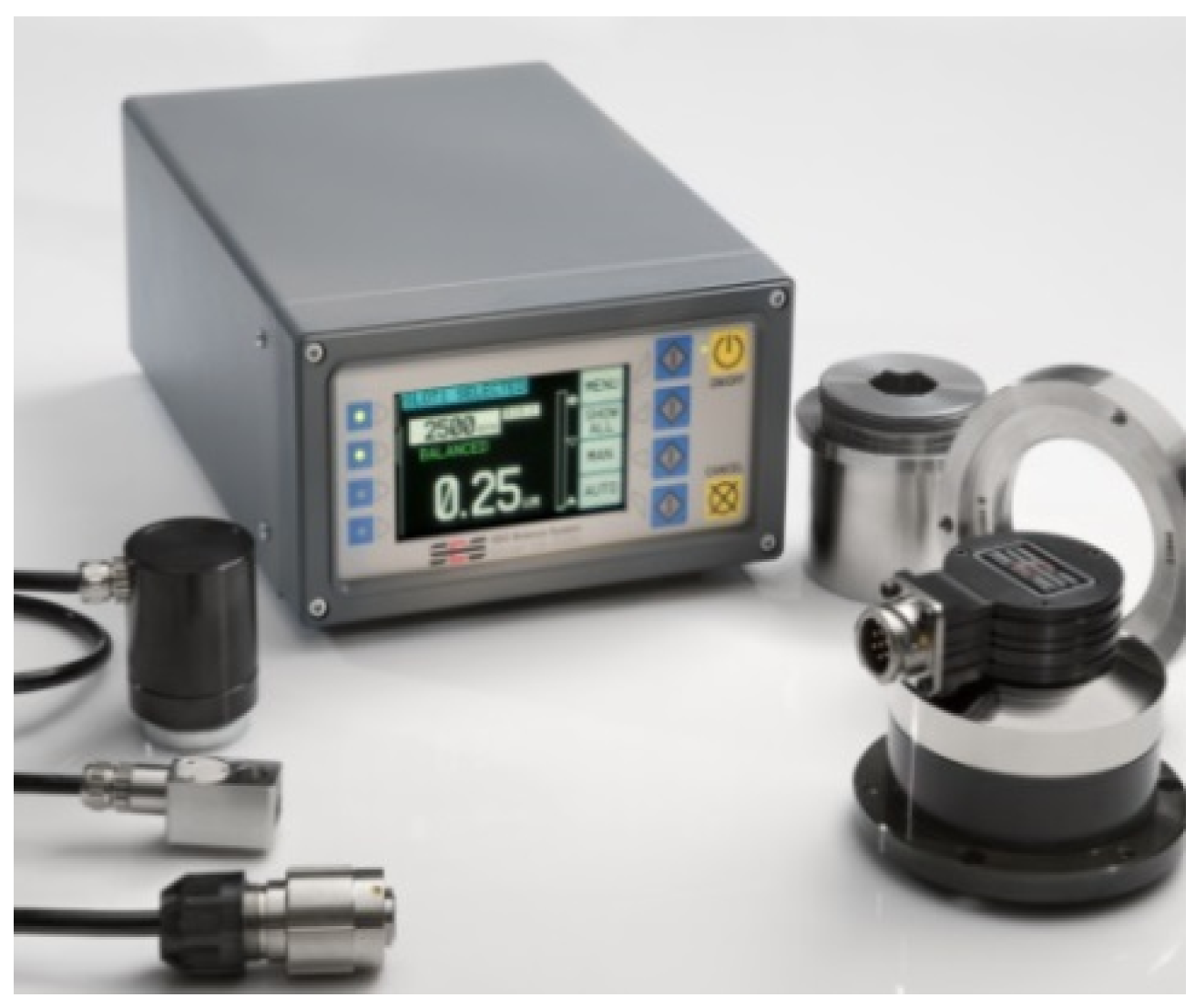

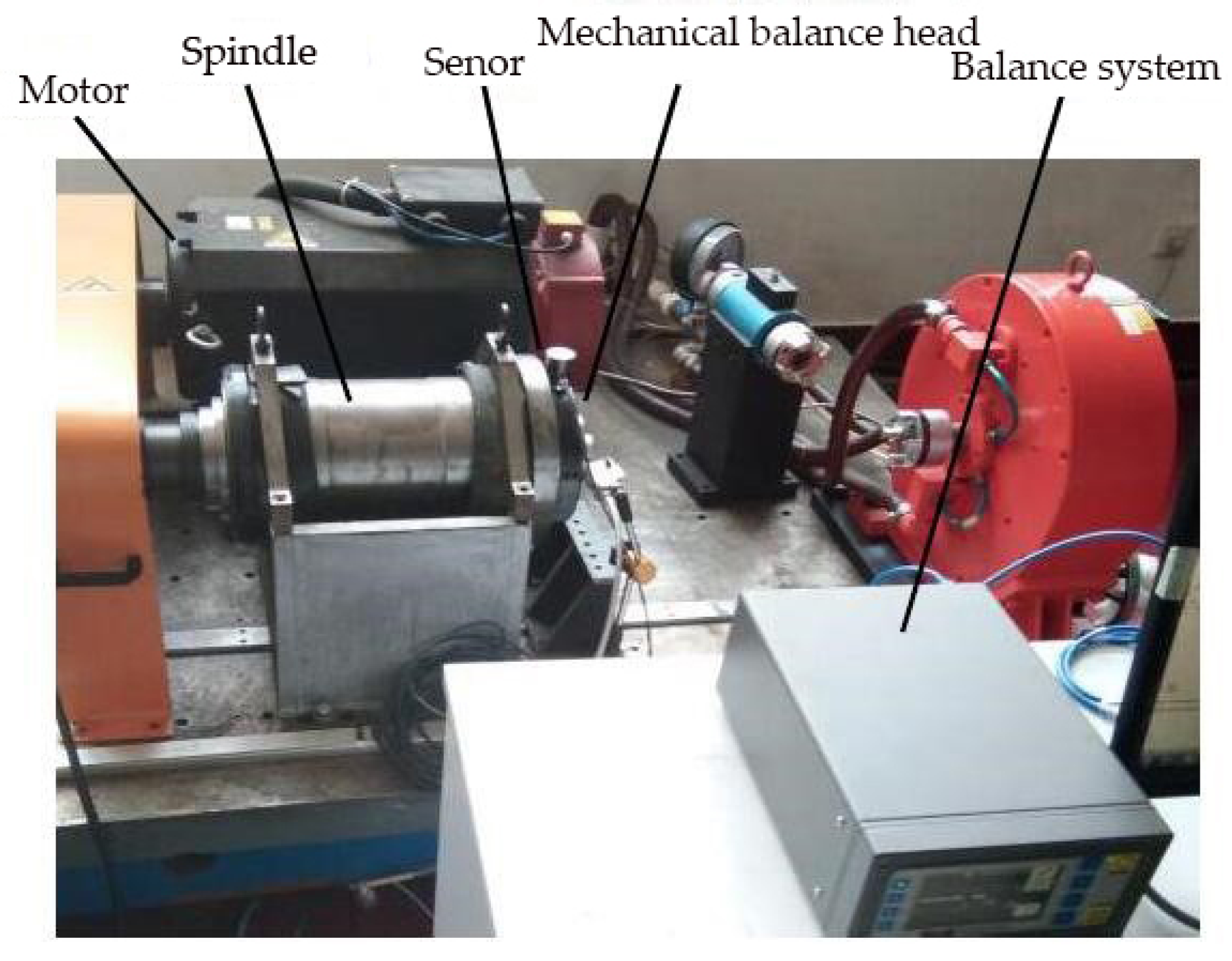
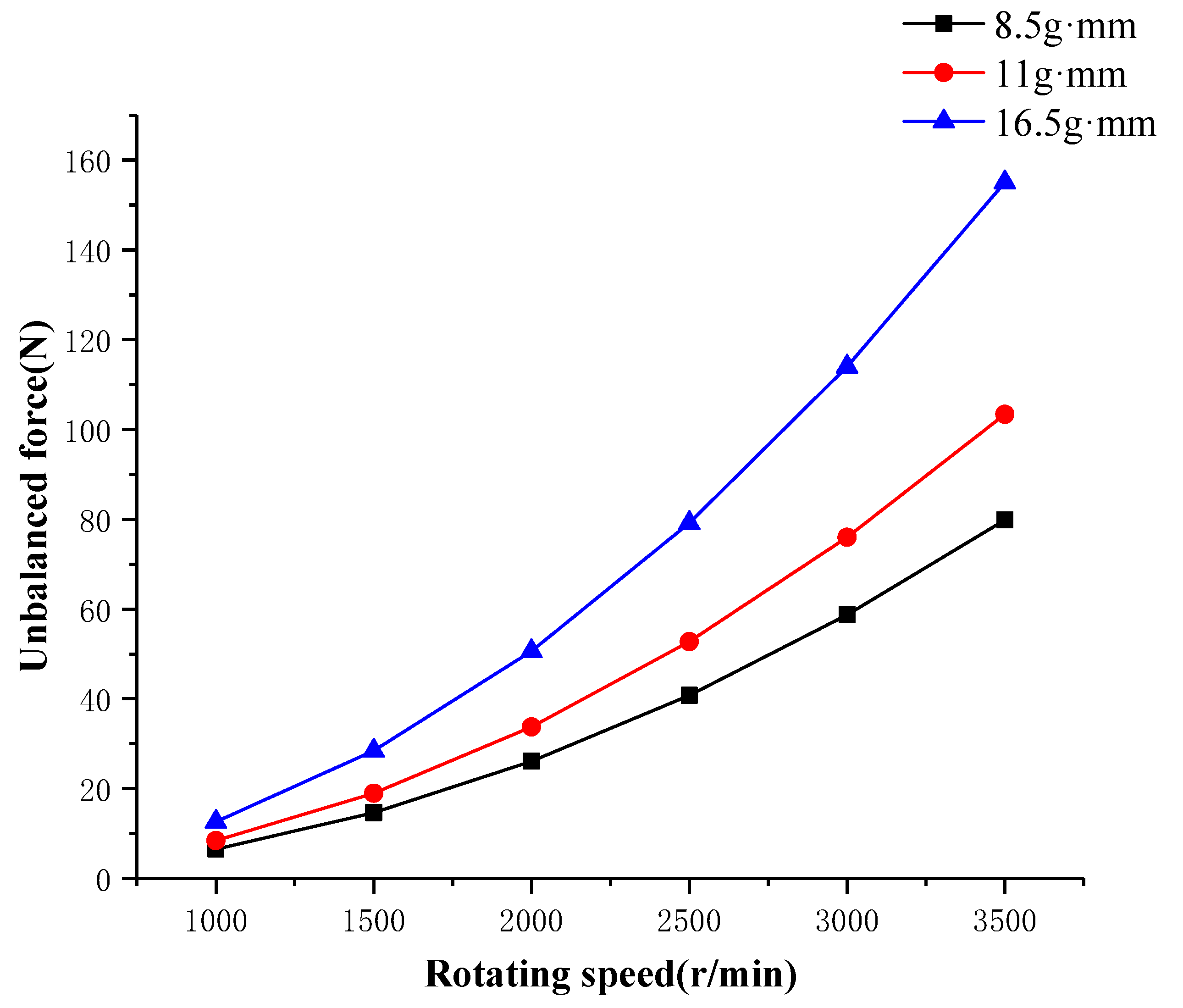

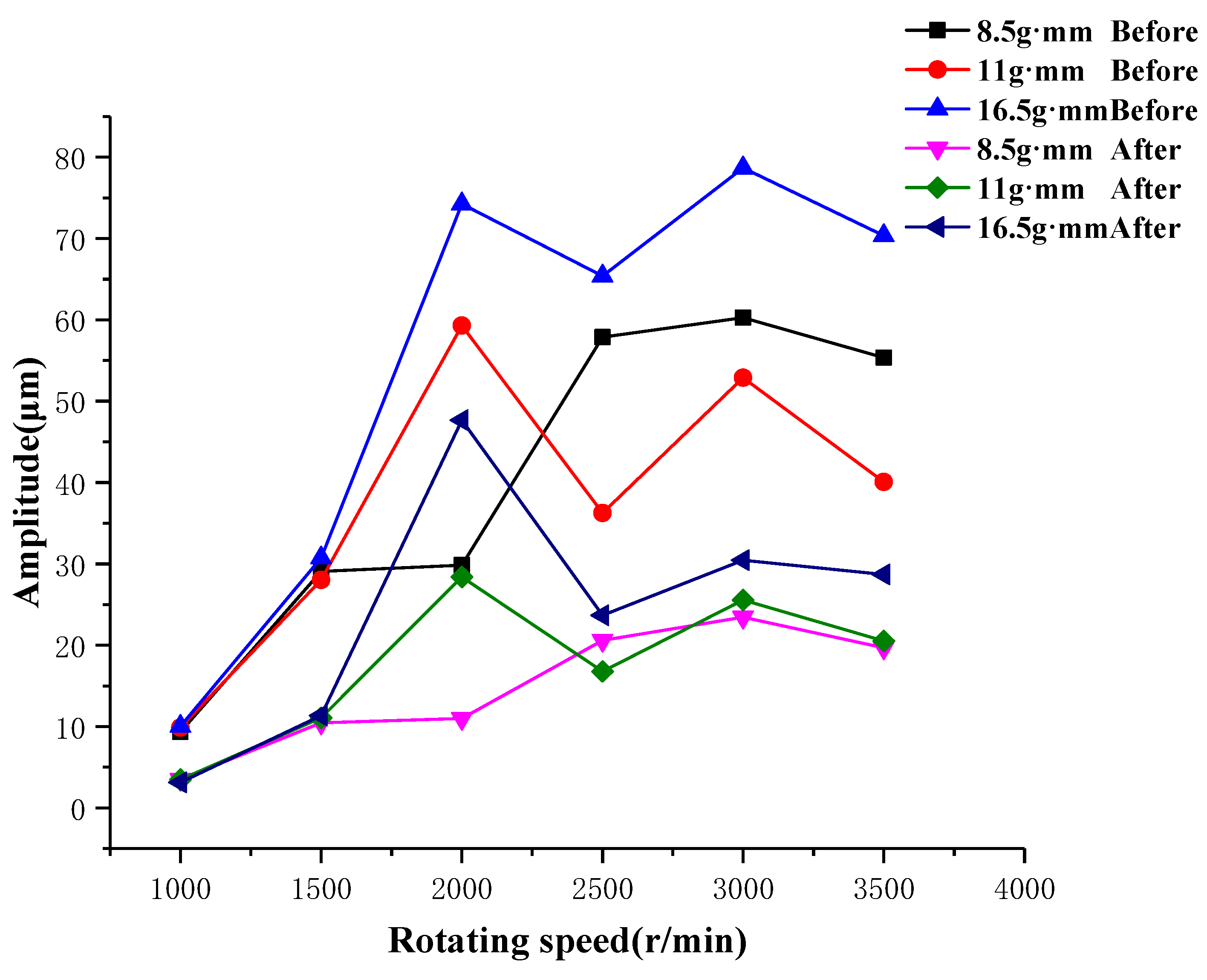
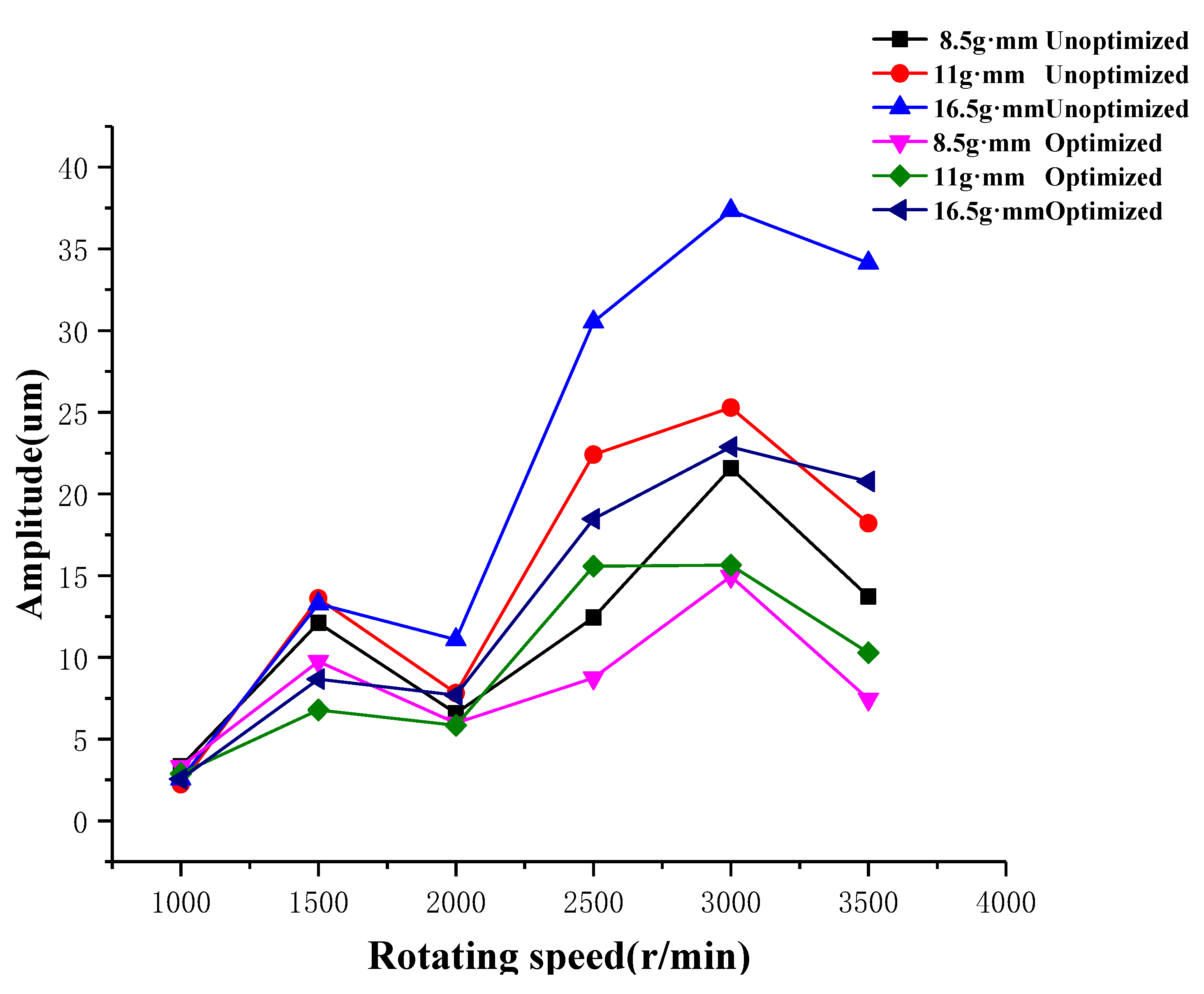
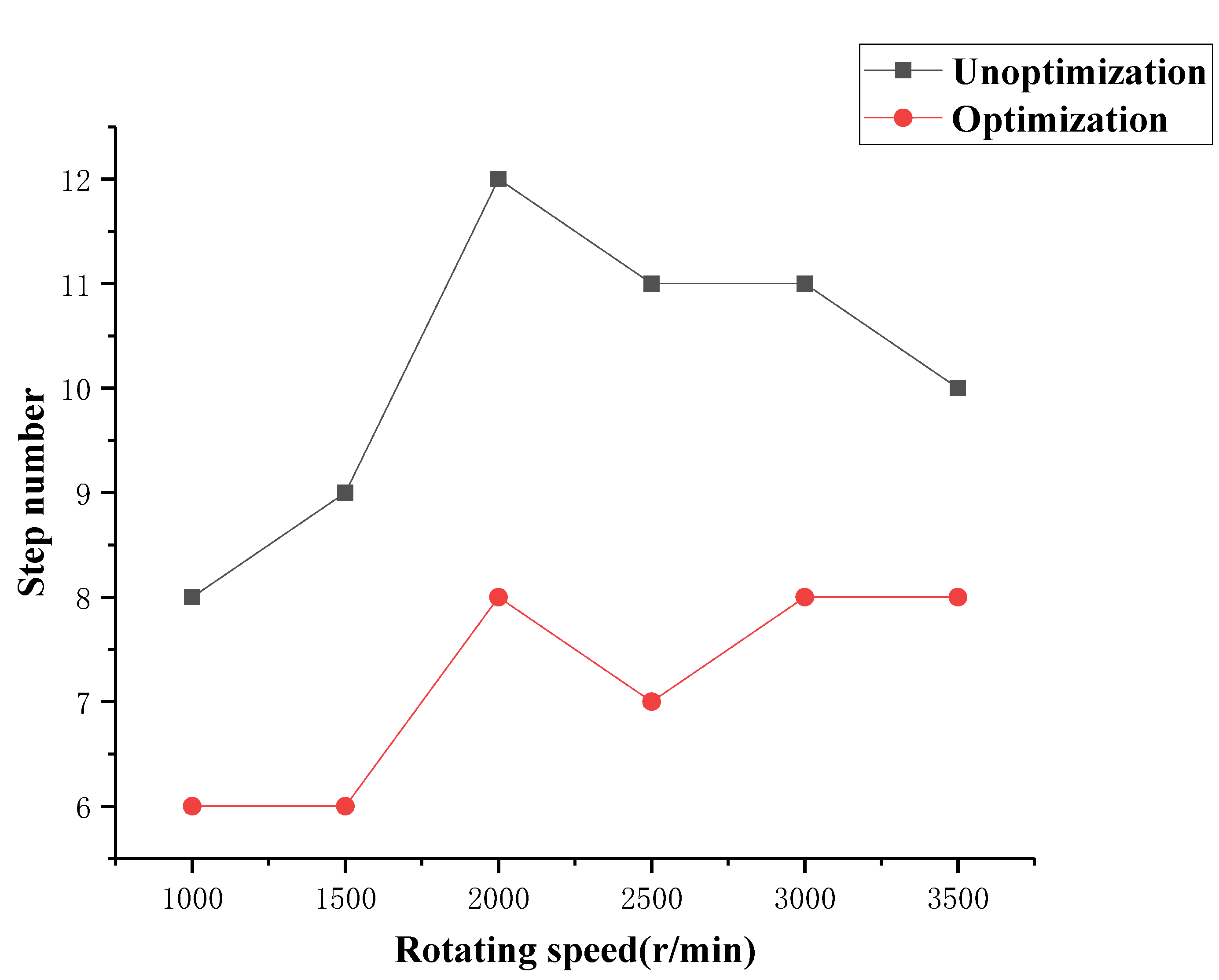

| Speed /r/min | Phase of 8.5 g.mm Mass/° | Phase of 11 g.mm Mass/° | 16.5 g.mm Mass Phase/° | |||
|---|---|---|---|---|---|---|
| A | B | A | B | A | B | |
| 1000 | 98 | 262 | 17 | 221 | 130 | 350 |
| 1500 | 102 | 265 | 18 | 220 | 130 | 348 |
| 2000 | 98 | 260 | 19 | 222 | 132 | 345 |
| 2500 | 99 | 262 | 19 | 221 | 133 | 347 |
| 3000 | 98 | 261 | 19 | 220 | 134 | 346 |
| 3500 | 99 | 261 | 20 | 221 | 133 | 346 |
© 2020 by the authors. Licensee MDPI, Basel, Switzerland. This article is an open access article distributed under the terms and conditions of the Creative Commons Attribution (CC BY) license (http://creativecommons.org/licenses/by/4.0/).
Share and Cite
Wang, Z.; Zhang, B.; Zhang, K.; Yue, G. Optimization and Experiment of Mass Compensation Strategy for Built-In Mechanical On-Line Dynamic Balancing System. Appl. Sci. 2020, 10, 1464. https://doi.org/10.3390/app10041464
Wang Z, Zhang B, Zhang K, Yue G. Optimization and Experiment of Mass Compensation Strategy for Built-In Mechanical On-Line Dynamic Balancing System. Applied Sciences. 2020; 10(4):1464. https://doi.org/10.3390/app10041464
Chicago/Turabian StyleWang, Zhan, Bo Zhang, Ke Zhang, and Guodong Yue. 2020. "Optimization and Experiment of Mass Compensation Strategy for Built-In Mechanical On-Line Dynamic Balancing System" Applied Sciences 10, no. 4: 1464. https://doi.org/10.3390/app10041464
APA StyleWang, Z., Zhang, B., Zhang, K., & Yue, G. (2020). Optimization and Experiment of Mass Compensation Strategy for Built-In Mechanical On-Line Dynamic Balancing System. Applied Sciences, 10(4), 1464. https://doi.org/10.3390/app10041464





